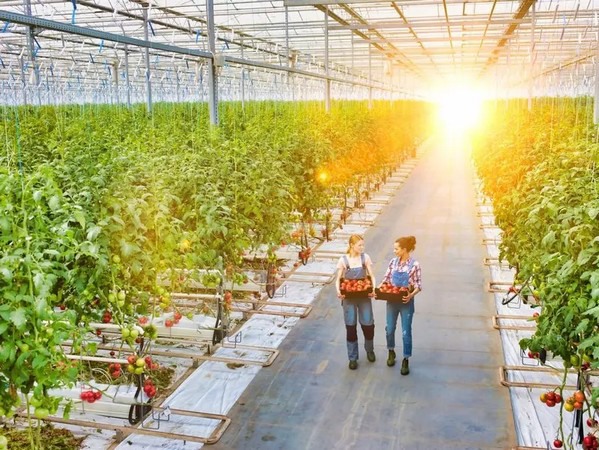In greenhouses, plants and vegetables are cultivated all year round under controlled conditions. For this purpose, modern greenhouses are equipped with a wide variety of technical systems for irrigation, lighting, shading, CO2 fertilization, heating, ventilation, and cooling. In addition to supplying the plants with sufficient water, light, and nutrients, the best possible control of humidity, temperature, and CO2 content are some of the decisive factors for ideal plant growth. Since the climate conditions in the greenhouse have a direct influence on the quality and yield of the plants, it is important to monitor and regulate them as closely as possible.
Challenges for climate sensors in greenhouses
CO2, humidity, and temperature sensors must provide accurate and reliable measurement results to the climate control system in the greenhouse. Inaccurate or even false readings impact productivity and, in the worst case, can jeopardize the entire harvest. The sensors used for climate monitoring, therefore, have a direct influence on the economic success of a greenhouse crop.
But the climatic conditions that are conducive to plant growth are a challenge for the sensors. Influencing factors that can have a negative effect on the accuracy and service life of the sensors are:
- Permanently high humidity and occasional condensation (orchids, tropical plants, cucumbers, melons, mushrooms)
- Chemical contamination with highly corrosive substances (sulphur in rose greenhouses, chlorine dioxide, ethene ...)
- Fertilisers, pesticides and herbicides (especially for orchid cultivation in combination with high humidity)
- Solvents from cleaning solutions, e.g., hydrogen peroxide contamination from disinfection

In greenhouses, CO2, humidity, and temperature sensors ensure ideal growing conditions.
Criteria for selecting the right sensors
Greenhouse outfitters and operators need to pay particular attention to the choice of suitable sensors. Sensors that meet the following quality criteria are suitable for use in harsh environments:
- High long-term stability, even in harsh and aggressive environments
- Resistant to pollution (e.g., protective coating of the sensing element)
- Heated sensing module/heated sensing probe (prevents condensation and corrosion)
- Robust, dust- and waterproof enclosure (protection class IP65/ NEMA 4)
- Service-friendly (simple sensor replacement or replaceable sensing module)
It is of decisive importance for the quality and yield of the plants cultivated in the greenhouse that the sensors provide accurate, long-term stable, and reproducible measurement results. At the same time, precise and continuous climate monitoring allows the use of resources, e.g., for heating, humidification, or CO2 fertilization, to be regulated as efficiently and economically as possible.
For more information:
E+E Elektronik
www.epluse.com
